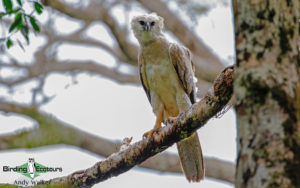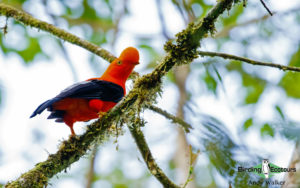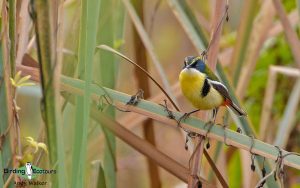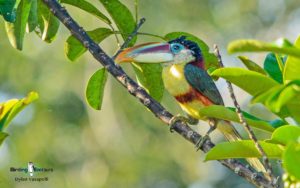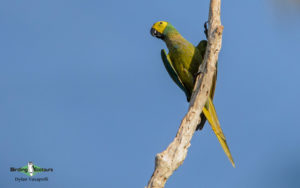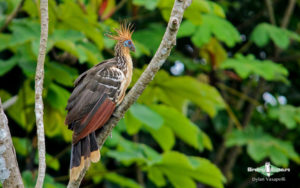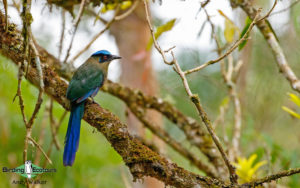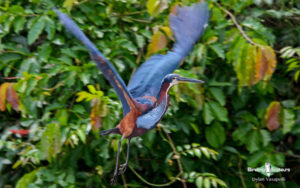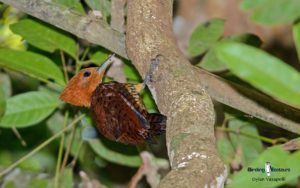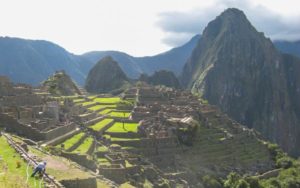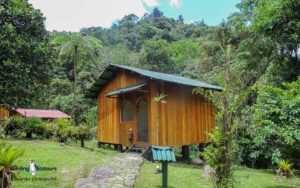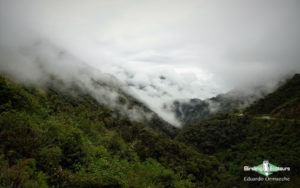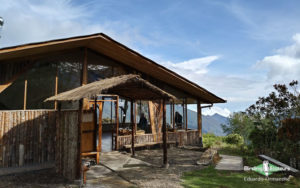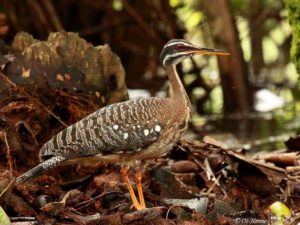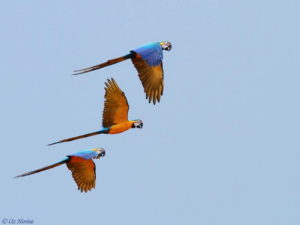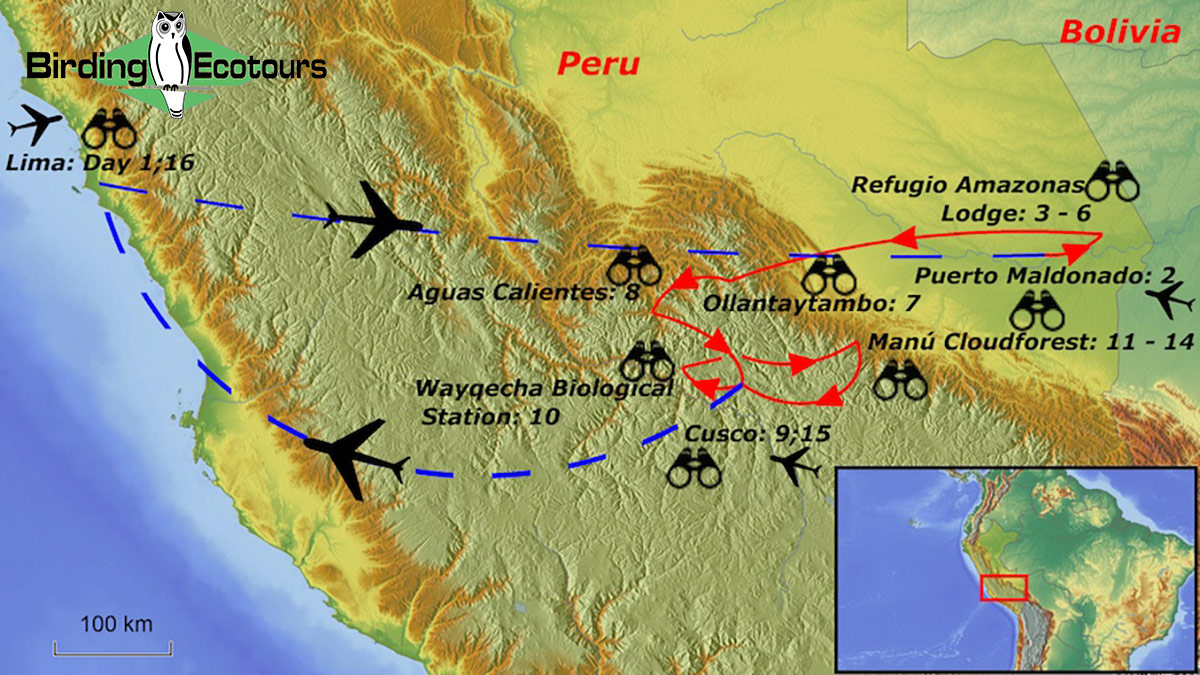South Peru – Birding the Inca Empire, Andes and Amazonian Rainforests
Go to: Peru Birding Tours | Birding Tours in the Neotropics | All our birding tours
South Peru: Birding the Inca Empire, Andes and Amazonian Rainforests
July 2025
Peru has the second highest country bird list on the planet (second only to Colombia). With an incredible bird species list of 1,890 species and an equally amazing 113 country endemics, Peru is, quite simply, a must-visit birding destination. Our 16-day tour through southern Peru will take you to explore some of the classic highlights of this incredible country. Peru is also famous for being one of the richest countries on the planet for archaeology, with a staggering pre-Hispanic heritage that started around 5,000BC, making it easy to find remains of its ancient past around each corner. This tour will take you to explore some of the country’s classic, famous birding sites of the southern part of the country: Machu Picchu, the Manu Road and the Macaw Clay Lick. The magnificent Andean scenery and archeological sites provide a grand backdrop to the birding.
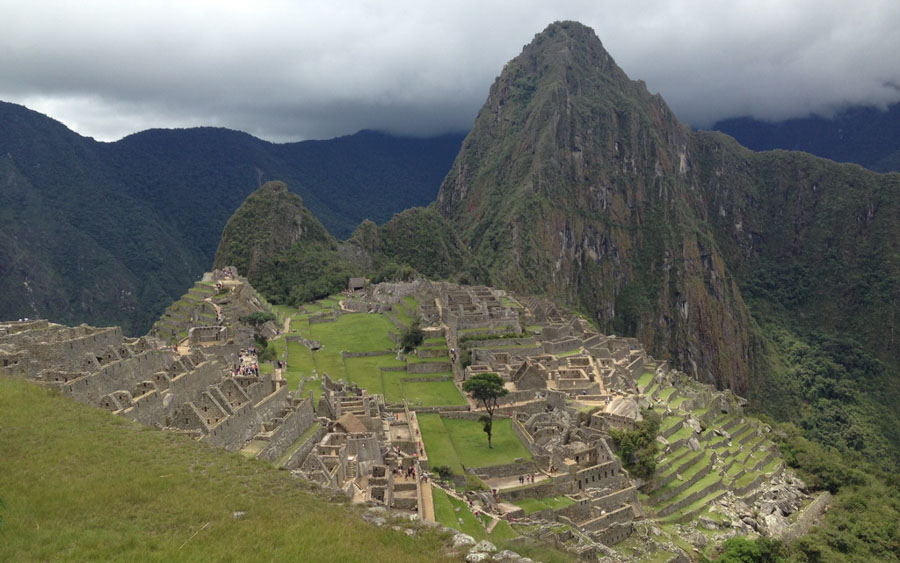
Our tour will start in the city of Lima, the international point of entry to the country, and after being welcomed by our staff, we will spend a night in a comfortable hotel in the city. The following day we will catch a flight to the city of Puerto Maldonado, the capital of the Madre de Dios state, in the Peruvian Amazon. Puerto Maldonado provides the main point of access to the Tambopata National Reserve, a 1,060 square mile (2,700 square kilometers) wildlife haven which protects several Amazon rainforest ecosystems. This reserve is a refuge for a number of threatened and charismatic species including the likes of Giant Otters, Jaguars, Harpy Eagles and several species of loud and colorful macaws. We shall spend five days exploring this region which includes a couple of nights at the Chuncho Lodge, located near the famous Macaw Clay Lick along the Tambopata River. Here you will have the chance to witness one of the most incredible natural avian spectacles, with dozens of macaws and parrots congregating in a unique combination of color and noise; a sensory overload if there ever was one! To maximize our chances of seeing the clay lick in its full splendor we have included two visits to it. During our stay in Chuncho Lodge, we will also spend time birding along a number of forest trails where we may be lucky enough to encounter other elusive forest creatures such as Colombian Red Howler Monkey, Southern Amazon Red Squirrel, Tayra, and, with luck, a Lowland (Brazilian) Tapir or even the elusive Jaguar. Our Best of Brazil tour birding and mammal tour, which includes the Pantanal, is the best option for seeing Jaguar and other charismatic South American mammals; in Peru they tend to be more elusive.
We will have the chance to visit a classic Amazon oxbow lake where we should encounter some similar widespread Amazon species similar to those found at Chuncho Lodge but with the addition of some aquatic birds such as the incredibly beautiful Agami Heron, American Pygmy Kingfisher, Green Ibis, Sungrebe, the famous leaf-eating Hoatzin, Horned Screamer and with some luck, the scarce and endangered Giant Otter.
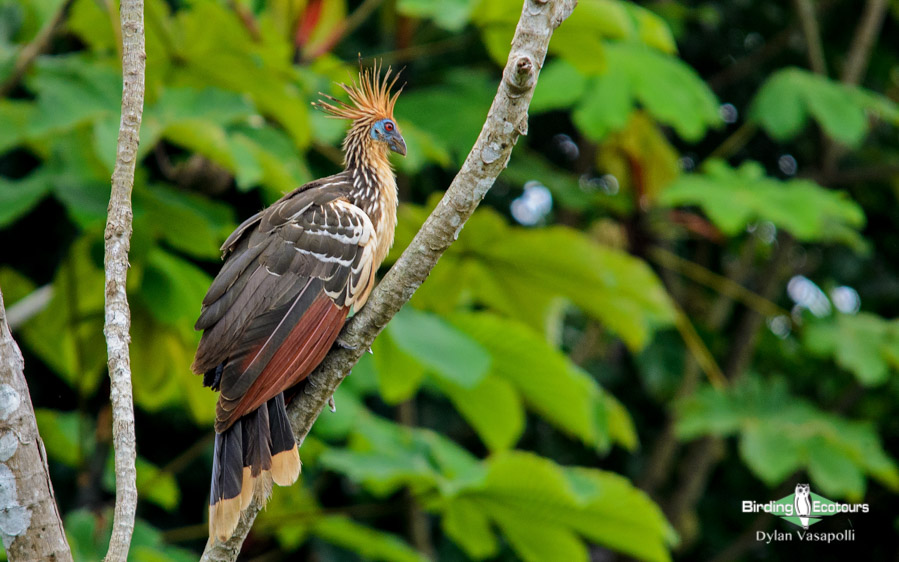
After six days in the Amazon basin, we will fly to the city of Cusco, at an altitude of 8,858 feet (2,792 meters), from where we will be transferred to the comfortable Hotel Pakaritampu in the nearby town of Ollantaytambo. In the hotel gardens we will hope to see a number of fantastic hummingbird species including Bearded Mountaineer and Green-tailed Trainbearer. The small tourist town of Ollantaytambo stands near the train station that will take us to the famous Machu Picchu ruins.
The next day we will take a 1.5-hour, magnificently scenic, Andean train ride to the town of Aguas Calientes (hot springs), the base from which we will enjoy the ancient Inca ruins of Machu Picchu (we will have a maximum of three hours at this site). We will use the time to see the site from all its classic angles and soak in the atmosphere of this world-famous archaeological wonder. While we are here, we will also spend time tracking down the Peruvian endemic Inca Wren. The lush forest around Machu Picchu holds other interesting species such as the endemic Masked Fruiteater, the endemic Green-and-white Hummingbird, Slaty Tanager, Sclater’s Tyrannulet, Andean Cock-of-the-rock, Andean Motmot, Ocellated Piculet, Blue-naped Chlorophonia, Variable Antshrike, Rust-and-yellow Tanager, Andean Guan, White-eared Solitaire, Pale-legged Warbler, Oleaginous Hemispingus, while the nearby river provides views of Torrent Duck, White-capped Dipper and Fasciated Tiger Heron.
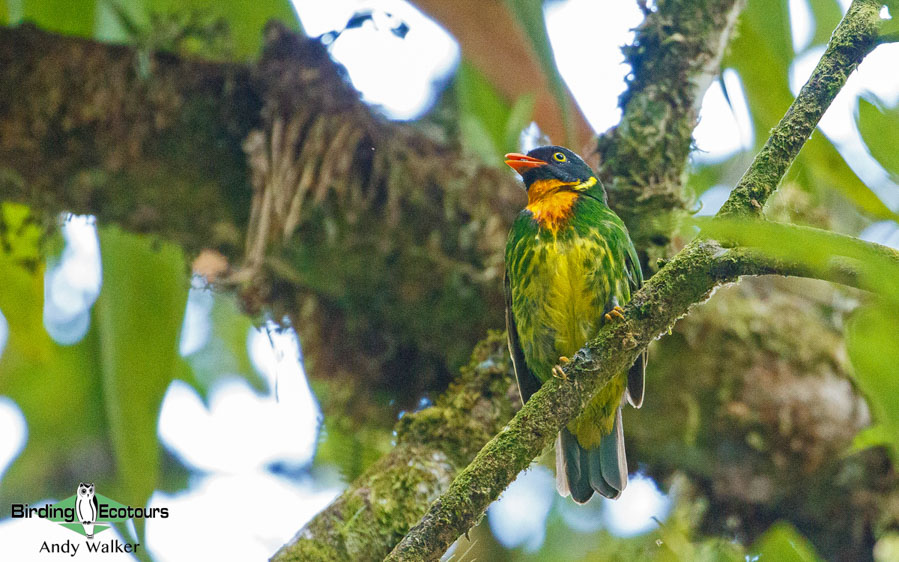
The last leg of our adventure will take us to explore the fantastic Manu Road, a famous (among birders especially), unpaved, old road that links the city of Cusco with the lowlands of Madre de Dios, in the Amazon basin. Manu Road provides us with dramatic altitudinal changes, ensuring we pass through many different habitat types which, in turn, means we will encounter a myriad of bird species. Manu Road is an essential inclusion on any birding tour to southern Peru. We will spend the following five days exploring habitats including arid scrub slopes, steep mountain slopes, cloud forest and lush humid tropical forest. We will look for an incredible set of species such as the endemic Red-and-white Antpitta, Marcapata Spinetail, Creamy-crested Spinetail, Chestnut-breasted Mountain Finch, Masked Trogon, Grey-breasted Mountain Toucan and Golden-headed Quetzal. Mixed-species flocks will be investigated for a number of tanagers such as Paradise, Bay-headed, Spotted, Beryl-spangled, Blue-and-black and Golden-collared as well as the gorgeous Versicolored Barbet.
The two-week-long odyssey will give you an introduction to South America like no other. On this tour we will visit two mega birding destinations, Manu Road and the Macaw Clay Lick as well as the world-famous Machu Picchu Inca ruins. This tour can be combined with our preceding Cusco and Apurímac Jewels birding trip, where we target a number of classic Andean specials. Come and join us on this birding adventure which is sure to be an assault on the senses.
Itinerary (16 days/15 nights)
Day 1. Arrival in Lima
This is a travel day. You will arrive at Jorge Chávez International Airport in Lima and will be transferred to your hotel.
No activities are included on Day 1, since most international flights arrive in Lima late in the evening. If you arrive on an early flight you might be able to arrange an early check-in at the hotel (usually at a reasonable price), or we can organize an optional birding morning near the city.
Overnight: Hotel in Lima
Day 2. Flight to Puerto Maldonado and birding the town
After a 2.5-hour flight we will reach the Amazon town of Puerto Maldonado. Once in Puerto Maldonado, we will check in at the hotel and after lunch explore the Cachuela Road near town for our first set of birds.
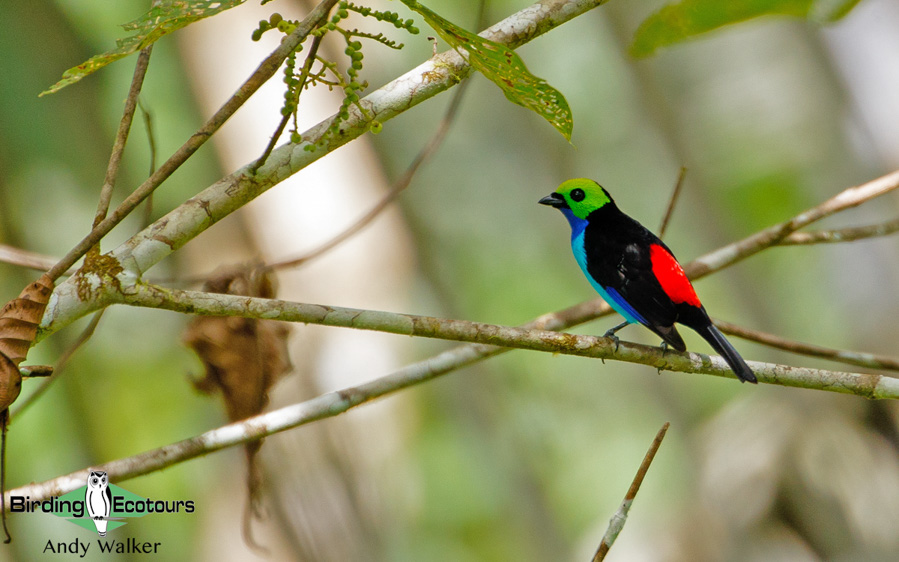
The birding around Puerto Maldonado is quite good early in the morning and then again in the afternoon. The habitat consists of agricultural pastures with tropical secondary growth, which is quite good for finding specials like the localized White-throated Jacamar. A population of Brazilian Teal has established itself around town, and we should have close-up views of this bird. Other birds include Rusty-margined Flycatcher, Spotted Tody-Flycatcher, Cobalt-winged Parakeet, Blue-headed Parrot, Bare-necked Fruitcrow, Green Ibis, Roadside Hawk, Red-breasted Blackbird, White-tailed Kite, Chestnut-bellied Seedeater, Purus Jacamar, Great Antshrike and Barred Antshrike.
Overnight: Hotel Cabaña Quinta, Puerto Maldonado
Day 3. Birding Sandoval Lake
We will have an early start to take our 45-minute-long boat trip along the river to the Sandoval Lake, a huge oxbow lake near the Madre de Dios River. The trail leading to the lake is roughly two miles (almost three kilometers) long and along the trail we will keep a look out for species such as Black-fronted Nunbird, Buff-throated Woodcreeper, Yellow-tufted Woodpecker, White-bellied Parrot, Coraya Wren, Great Antshrike, Black-faced Antthrush, Plumbeous Pigeon, Lineated Woodpecker, Undulated Tinamou, Spix’s Guan, Speckled Chachalaca, Black-tailed, Blue-crowned and Green-backed Trogons and Amazonian Motmot. When we reach the lake, we will have a canoe ride across the lake where we expect to see the gorgeous Blue-and-yellow Macaw, and other birds such as Green Ibis, Grey-cowled Wood Rail, Bluish-fronted Jacamar, Sungrebe, Sunbittern, Long-billed Woodcreeper, Point-tailed Palmcreeper, Horned Screamer, Limpkin, Capped Heron, Sunbittern, Greater Ani, Masked Crimson Tanager, White-throated Toucan, Black Caracara, Snail Kite, Ringed, Green, Amazon and American Pygmy Kingfishers, Gilded Barbet, and with luck the elusive Agami Heron. We shall pay special attention to Red-bellied Macaws, which roost in the Mauritian Palm trees. We will then take the trail back to the river to be transferred to Puerto Maldonado city.
Overnight Hotel Cabaña Quinta, Puerto Maldonado
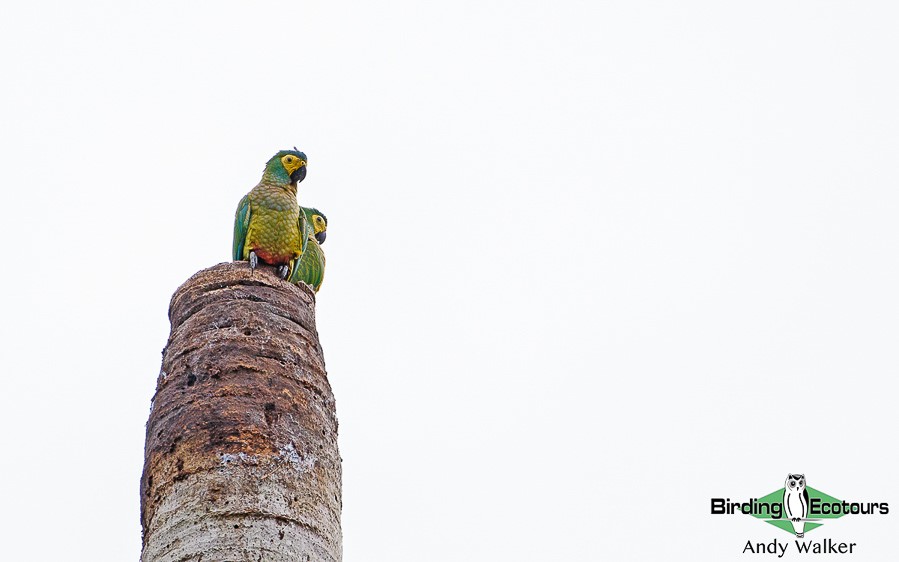
Days 4– 6. Macaw Clay Lick and Amazon rainforest
We will spend the next three days exploring the Chuncho Lodge located along the Tambopata River. This lodge can only be reached by a combination of land and river transportation from Puerto Maldonado and is located near the Tambopata National Park in the Amazon lowlands.
The lodge is strategically located near the famous Chuncho Macaw Clay Lick where (weather permitting) we can witness the daily ritual of several species of parrots and macaws coming to ingest the clay from which they obtain nutritional supplements and antioxidants to eliminate potential toxins from their usual diet.
The Chuncho Macaw Clay Lick provides us with chances of seeing Chestnut-fronted Macaw, Red-and-green Macaw, Scarlet Macaw, Blue-and-yellow Macaw and Blue-headed Macaw, which should hopefully give us six macaw species for the trip.
Other parrots seen at the clay lick include Southern Mealy Amazon, Yellow-crowned Amazon, Blue-headed Parrot, Orange-cheeked Parrot, White-eyed Parakeet and Dusky-headed Parakeet.
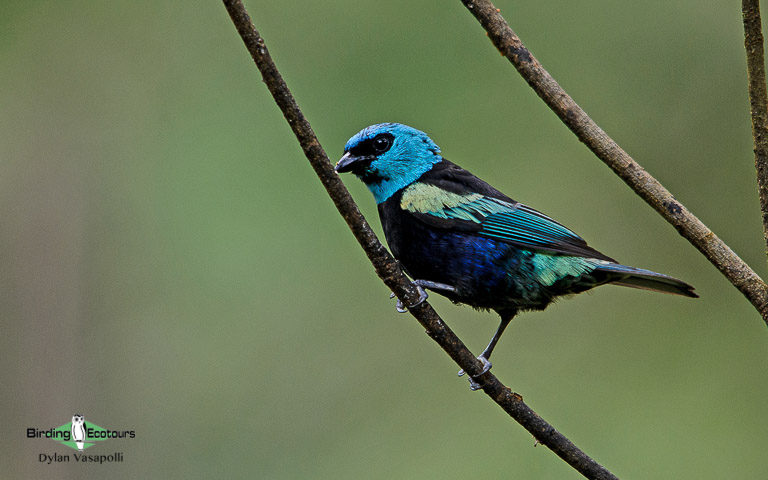
The river trips from the lodge to the clay lick can be delightful with some of the following fantastic species likely: Capped Heron, Cocoi Heron, White-banded Swallow, White-winged Swallow, Yellow-tufted Woodpecker, Black Caracara, Great Black Hawk, Swallow-winged Puffbird, Roadside Hawk, Sunbittern, and perhaps even our first encounters with Colombian Red Howler Monkeys and Capybaras. If we are lucky, we may see the scarce Orinoco Goose; this is one of the best places to see this species in Peru.
The forest interior holds skulking species such as Striated Antbird, White-browed Antbird, White-lined Antbird, Silvered Antbird, Plumbeous Antbird, Goeldi’s Antbird, Chestnut-tailed Antbird, Black-faced Antthrush, Undulated Tinamou and Moustached Wren. Other canopy and sub-canopy forest species that we might see,include White-necked Puffbird, Semicollared Puffbird, Lemon-throated Barbet, Lettered Aracari, Chestnut-eared Aracari, Band-tailed Manakin, Screaming Piha, Crimson-crested Woodpecker, and Red-necked Woodpecker. With luck, we might also find the elusive Razor-billed Curassow, Pavonine Quetzal and Pale-winged Trumpeter.
At night we can try for Crested Owl, Spectacled Owl and Tawny-bellied Screech Owl.
Overnight: Chuncho Lodge
Day 7. Flight to Cusco and transfer to Ollantaytambo
Today we will be transferred back to the city of Puerto Maldonado and catch a flight to Cusco in the Peruvian Andes.
The city of Cusco is well-known as the capital of the ancient Inca Empire and is certainly one of the most important archaeological destinations in the world. Cusco is a busy tourist destination with good facilities and we will overnight in Cusco later in the tour; today we’ll instead proceed further to Ollantaytambo. We should hopefully arrive in this small, fascinating Andean town in the Urubamba Valley, the “sacred valley of the Incas” in the afternoon.
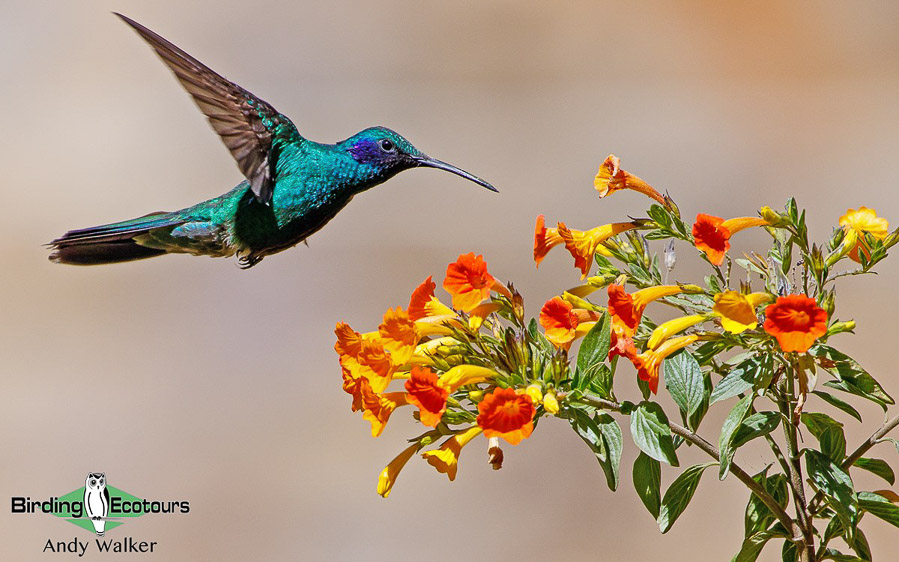
The gardens of the hotel are very good for hummingbirds such as the endemic Bearded Mountaineer, spectacular Black-tailed and Green-tailed Trainbearers, White-bellied Hummingbird, Sparkling Violetear and a number of other species including Greenish Yellow Finch and Golden-billed Saltator.
Overnight: Hotel Pakaritampu, Ollantaytambo
Day 8. Birding Machu Picchu
Ollantaytambo is a very busy, yet small, tourist town. From here, we will take a 1.5-hour train journey to the village of Aguas Calientes (hot springs), the entry point to the famous Machu Picchu ruins. This is the most scenic part of the journey and through the train windows it is possible to see Torrent Ducks on the rapids of the Urubamba River. We will then take a 20-minute bus drive to the top of the mountain and will then enter the renowned Inca ruins of Machu Picchu. Despite the crowds of tourists, we will do our best (weather permitting) to ensure you get all the classic Machu Picchu views and appreciate its fine and impressive stone work. Please note, the visit does not include the complete cultural and comprehensive tour that can take over three hours, as there are also some important target birds for us to look out for while here.
The lush forest around Machu Picchu holds great species such as Andean Motmot, Collared Inca, Slate-throated Whitestart, Green Hermit, Plum-crowned Parrot, Torrent Duck, Torrent Tyrannulet, Black Phoebe, Silver-backed Tanager, Mottle-cheeked Tyrannulet and the Peruvian endemic Inca Wren.
Overnight: Aguas Calientes
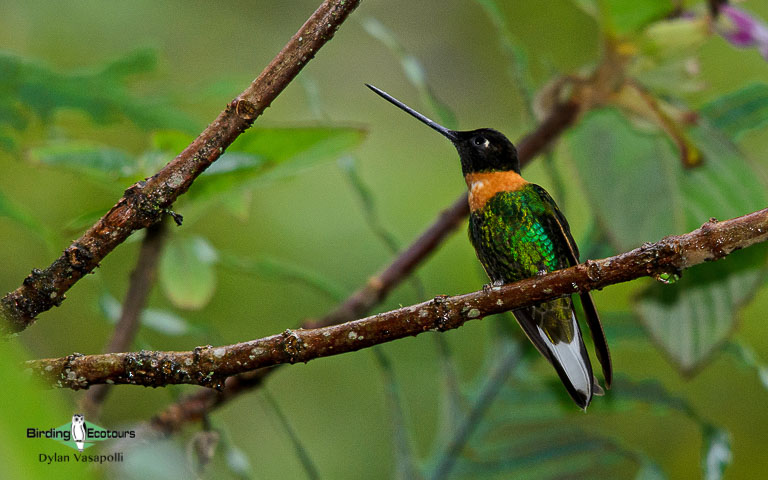
Day 9. Birding the Urubamba River, return to Cusco
We will spend a full morning along the Urubamba River, looking for the endemic and most-wanted Masked Fruiteater as well as the endemic Green-and-white Hummingbird. We will look out for mixed-species flocks which often contain Sclater’s Tyrannulet, Plumbeous-crowned Tyrannulet, Ashy-headed Tyrannulet, Blue-necked Tanager, Saffron-crowned Tanager, Ocellated Piculet, Slaty Tanager, Fawn-breasted Tanager, Barred Becard, Azara’s Spinetail, Chestnut-capped Brushfinch, Capped Conebill, Mitred Parakeet, Golden-crowned Flycatcher, Golden-olive Woodpecker and Grey-breasted Wood Wren.
After lunch we will take the train back to Ollantaytambo and then drive back to Cusco to our hotel located just a few blocks from the main Cusco square.
Overnight: Andean Wings Boutique Hotel, Cusco
Day 10. Birding the Manu Road
Today we will explore the famous road that connects the Andes of Cusco with the Amazon rainforest, the Manu Road. The Manu Road passes through different types of habitat like dry high-altitude Andean mountains, elfin forest, cloud forest, and moist montane forest. We shall leave Cusco in the direction of the Manu Road with the first stop on the Huacarpay Lake. Here we shall have a quick look for several species of Andean waterfowl, like Yellow-billed Teal, Yellow-billed Pintail, Puna Teal, Cinnamon Teal, and Andean Duck. Other birds include Plumbeous Rail, Andean Coot, Yellow-winged Blackbird, Many-colored Rush Tyrant, Streak-fronted Thornbird, Wren-like Rushbird, Andean Gull, Andean Lapwing, Andean Flicker and Cinereous Harrier. We will also look for Giant Hummingbird, the largest hummer in the world, as well as for the endemic Rusty-fronted Canastero.
We will drive up the mountains to 12,500 feet (3,800 meters), where we will have chances of seeing Slender-billed Miner, Mountain Caracara, Andean Flicker, Brown-bellied Swallow, Puna Thistletail, Brown-backed Chat-Tyrant, D’Orbigny’s Chat-Tyrant, White-throated Tyrannulet, Violet-throated Starfrontlet, Amethyst-throated Sunangel, White-banded Tyrannulet, along with two fine Peruvian endemics, Creamy-crested Spinetail and Chestnut-breasted Mountain Finch. In the evening we will look for Swallow-tailed Nightjar, which is often seen along the road.
Overnight: Wayqecha Biological Station near Manu National Park
Day 11. Birding the Manu Cloud Forest
We will explore the area around the lodge including the Wayqecha Canopy Walkway and the famous Pillahuata area looking for two important Peruvian endemics, Red-and-white Antpitta and Marcapata Spinetail, as well as other great birds such as Grey-breasted Mountain Toucan, Band-tailed Fruiteater, Masked Trogon, Southern Mountain Cacique, Red-crested Cotinga, Black-throated Tody-Tyrant, Trilling Tapaculo, Barred Fruiteater, Fulvous Wren, Moustached Flowerpiercer, Masked Flowerpiercer, White-collared Jay and Montane Woodcreeper. We will search through mixed-species feeding flocks where we may pick out a number of tanager species such as Golden-collared Tanager, Grass-green Tanager, Scarlet-bellied Mountain Tanager, Chestnut-bellied Mountain Tanager and Hooded Mountain Tanager. With some luck, we might find Yungas Pygmy-Owl, which is often seen in the cloud forest around Wayqecha. After a hopefully good morning birding session, we will start our slow drive through the magical humid montane forest including the Rocotal area where we can get our first looks at Blue-banded Toucanet, Chestnut-crested Cotinga and Andean Cock-of–the-rock.
Near the Union bridge, we will check the fast-flowing waters of the Kosñipata River looking for Torrent Duck and White-capped Dipper and with luck Lyre-tailed Nightjar at its daytime roost.
After a great day’s birding, we will arrive at the Cock of the Rock Lodge which will be our base for the next three days.
Overnight: Cock of the Rock Lodge, Manu Cloud Forest
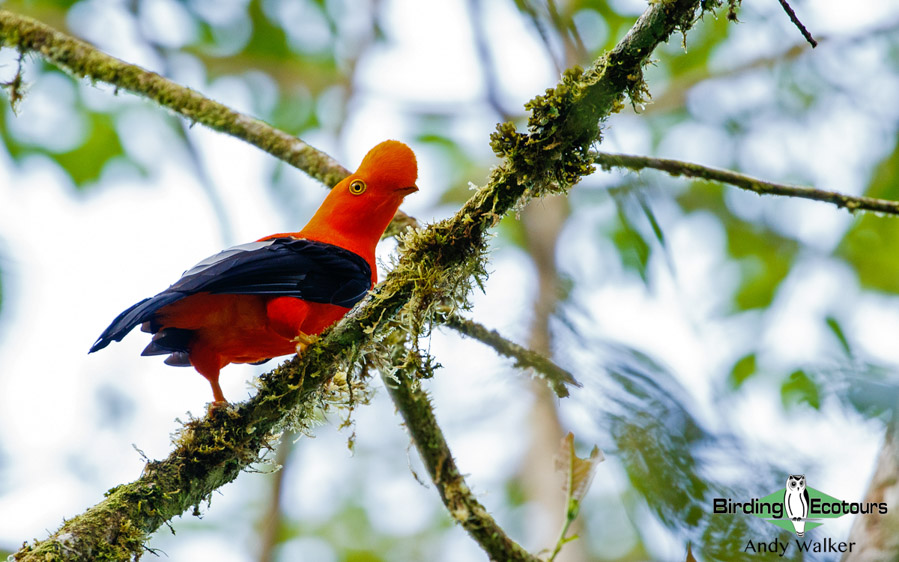
Days 12 – 14. Birding around Cock of the Rock Lodge
We have three full days to explore the area around the Cock of the Rock Lodge, looking for amazing flocks of tanagers such as Bay-headed Tanager, Golden Tanager, Blue-necked Tanager, Orange-eared Tanager, Spotted Tanager, Paradise Tanager, Straw-backed Tanager, Green-and-gold Tanager, Golden-eared Tanager and Beryl-spangled Tanager. We will also of course look for many other birds like Blue Dacnis, Black-faced Dacnis, Versicolored Barbet, Montane Foliage-gleaner, Peruvian Warbling Antbird, Stripe-chested Antwren, Chestnut-backed Antshrike, Western Fire-eye, Yungas Manakin, Olive-backed Woodcreeper, Plumbeous Pigeon, Lemon-browed Flycatcher, Slaty-capped Flycatcher, Black-and-chestnut Eagle, Ochre-faced Tody-Flycatcher, Magpie Tanager, Long-tailed Tyrant, Blue-banded Toucanet, White-eared Solitaire and Andean Cock-of-the-rock. At night we may find Rufescent Screech Owl and with luck the scarce Band-bellied Owl.
Then we have another day to explore the lower altitude parts of Manu Road, where we can find Bamboo Antshrike, Red-billed Scythebill, Dot-winged Antwren, White-lined Antbird, Ornate Stipplethroat, Scaly-naped Amazon, Buff-rumped Warbler, White-winged Tanager, the Peruvian endemic Black-backed Tody-Flycatcher. Hummingbird feeders provide great views of Violet-fronted Brilliant, Wire-crested Thorntail, Rufous-booted Racket-tail, Fork-tailed Woodnymph, Speckled Hummingbird, Sparkling Violetear, and Many-spotted Hummingbird.
We will be lucky to find the secretive Brown Tinamou which sometimes visits the Cock of the Rock Lodge gardens, also a good place to try for the elusive endemic Cerulean-capped Manakin and Yungas Manakin. The feeders in the garden often attract other wildlife such as Tayra, Bolivian Squirrel and Margarita Island (Large-headed) Capuchin.
The viewpoint known locally as the “Mirador” a few kilometers above the lodge, is a good vantage point to look for Black-and-chestnut Eagle and Solitary Eagle, truly spectacular raptors, while we will have our work set out for us as we keep a look out for Andean Potoos at their day roosts. Other mixed flocks often contain Cuzco Warbler, Two-banded Warbler, Grey-mantled Wren, Streak-necked Flycatcher, Capped Conebill and with luck Yellow-rumped Antwren.
Overnight: Cock of the Rock Lodge, Manu Cloud Forest
Day 15. Transfer to Cusco
On our final day on the Manu Road we will drive from Cock of the Rock Lodge back to Cusco, making selective stops along the road while looking for species we may have missed on previous days.
Overnight: Andean Wings Boutique Hotel, Cusco
Days 16. Flight to Lima and departure
You will fly out from Cusco to Lima city and connect to your international flights.
Please note that the itinerary cannot be guaranteed as it is only a rough guide and can be changed (usually slightly) due to factors such as availability of accommodation, updated information on the state of accommodation, roads, or birding sites, the discretion of the guides and other factors. In addition, we sometimes have to use a different international guide from the one advertised due to tour scheduling.
Download Itinerary‘Eduardo was a fantastic guide. Our trip to Peru and Manu was catered to be one of culture, wildlife, and of course, birds. Eduardo is very patient and knowledgeable, a great conversationalist guide as well! My first trip to South America was overall an incredible experience, even with a tight schedule of less than two weeks. Well done!’
Noah
‘Peru was extraordinary!!!!!! My “to do” list includes a message to Eduardo with some images that we captured and a tally of the last day’s birds seen with Dennis near Lima, so he can prepare a complete trip report. Wil and I completed our tally while he was still here visiting after our trip and it came in at a staggering 430+ species seen, and a trip total of 460 species either seen or heard by the Taylor brothers. Your guys delivered BIG TIME on this trip, with three stellar guides and nearly flawless logistics, including two excellent drivers as well. Can’t thank you enough, Chris.
Eduardo, as you no doubt already know, was top notch. It was tough saying good bye to him and Raul when they dropped us at the Cusco airport. We could not have had a better guide/driver combo for the core of the trip.
Wil and I have never hesitated to recommend you and BE to our acquaintances, and we now know that our unconditional recommendation can be extended to your Peruvian office as well. Thanks a million for your help in getting the Peru trip arranged. We’ll be in touch. I attach a photo of satisfied customers with their weary guide near the lower end of the Manu Road, with the Rio Union in the background.
For my part, the tour with you was the best overall of all the tours we’ve taken; most memorable, rewarding, and enjoyable.’
John

